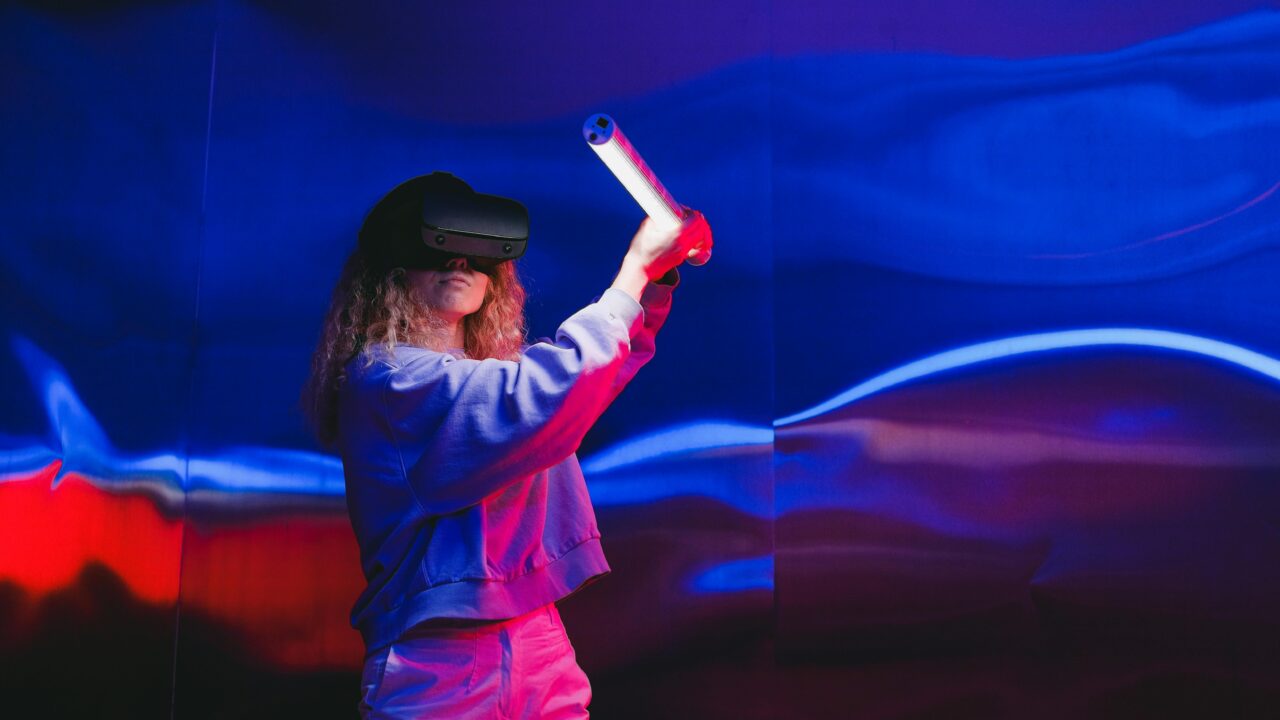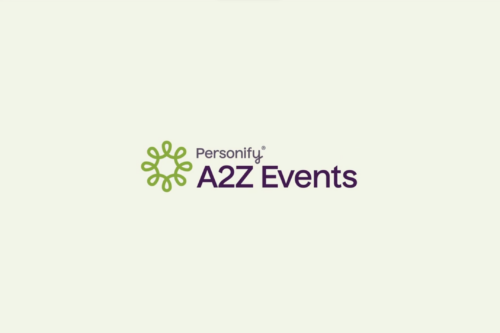Effective marketing not only informs people but also creates a lasting impression and formulates memories that leave a positive impact on the user. Experiential marketing seeks to create these types of experiences for users by immersing them in your brand and crafting experiences they will appreciate.
When you design events, you look for ways to engage your target audience. We will walk you through what you should know about the role and value of experiential marketing in effective modern customer engagement during events.
What is Experiential Marketing?
Experiential marketing has become an increasingly prevalent form of marketing, as businesses increasingly realize its potential for engaging users and driving interest in brands and products. As it has grown, it has attracted attention from a variety of large brands and influencers.
Before you can start planning what this form of marketing can do for you and your events, however, you want to go deeper to understand what makes this type of marketing so effective and how it can help your company.
Definition and Key Concepts
Experiential marketing creates a fully immersive experience where the attendees and participants get to experience first-hand what you have to offer. You create a unique event or experience for them as a part of your wider event, such as workshops or the chance to try samples of your product in a unique and memorable way.
The key to effective experiential marketing is creating experiences people appreciate and remember. This goes further than just giving people a chance to try a product sample, it is about creating a full experience for them that lets them experience your product sample or service on a deeper level.
The Role of Emotions
As a part of creating these memorable experiences, businesses will employ storytelling, emotions, and the senses to create impactful experiences. To fully immerse your attendees into your event, you need to create a story that builds the experience. Stories are also tightly connected with our memories, as people remember facts and information better when they are conveyed through stories.
Building your story will also create an emotional environment. Whether you inspire excitement over a new opportunity to try a new recipe, work to create joyful experiences through bringing out a person’s inner child, or create an environment of eager anticipation for those who want to see how a particular skill measures up to others, this emotional feedback further ties the memories into the minds of your attendees.
Finally, building these stories will call upon your ability to use the senses. Immerse your audience in the moment by thinking about your lighting, the sounds playing, and the smells surrounding them. All this comes together to create deeper interaction that will stay with your audience moving forward.
Benefits of Experiential Marketing for Events
Now that you have a better sense of what experiential marketing for events entails, let’s look more closely at the reasons why businesses would want to put these interactions to work for them.
Enhanced Audience Engagement

Experiential marketing offers excellent opportunities for building audience engagement. People feel drawn to exhibits and event portions that present something different and offer new experiences. Offering people the chance to interact with your exhibit and see things for themselves, instead of just being told about them, will encourage more people to come and see what makes your brand unique.
Your interactive elements can take a variety of different formats. You might create:
- Workshops, such as a cooking class to promote catering services, a restaurant, or similar type of business
- Games and experiences that let people try out your products or services in a new way
- The chance to use virtual reality headsets or other types of technology to interact with your brand and messaging in an interesting format
These interactive elements encourage your target audience to explore what you have to offer, and getting their attention is the first step to building a relationship with a potential lead.
Brand Loyalty and Advocacy
Experiential marketing can also build brand loyalty and advocacy. By creating outstanding experiential event opportunities, you lay a strong foundation for positive experiences and interactions. When customers interact with your business and walk away feeling positive about your brand, it helps to foster loyalty to your company. They remember those positive experiences in the long run and thus feel more inclined to stay with you.
People who have had positive interactions at these experiential marketing events also become more likely to tell others about your brand. They now have a great story to tell about something interesting they did or saw, which encourages them to spread the story of what your organization has to offer. People appreciate hearing about companies from other consumers; they trust these word-of-mouth recommendations more than traditional advertising.
Data Collection and Insights
Finally, as you think about the experiences you create for your attendees, you cannot overlook the potential for data collection and insights from the event. When you allow people to actively use or experiment with something related to your brand, whether that is a recipe, your product, or exploring your offerings with virtual reality, you will quickly be able to monitor people’s impressions and feedback on your offering. You can see whether people get excited about what you have made and how well it works for real users.
Have a variety of data collection methods ready during your experiential events. You might deliver surveys to people after they engage with your experiential offering that directly ask about their enjoyment of your product or service. You might also ask people about brand impressions before and after the event.
Data collection can also examine the broader picture and the impact of your efforts on brand perception. Track the queries and hits your business receives in the days and weeks following the campaign. Similarly, watch social media for discussions of your event and ask some customers directly what they think.
All these methods will make it easier for you to build a solid understanding of how people perceive your brand and your products following your marketing effort.
Crafting Unique Event Experiences
Now that you see the value of creating these experiential marketing campaigns, you likely want to know how you can create this type of interaction for your next event. We recommend that you break down the planning process into a few main components that will help you create interactive experiences people will appreciate.
Understanding Your Audience

Start by getting to know your audience. This is the 101 step of most marketing efforts, so you might be tempted to skip this step, but you want to pay particularly close attention to this part. To create a successful event, you need to get to know your audience in a different way. You will target a particular component of your participants.
Consider, for example, when Mercedes-Benz created an augmented reality showroom to allow people to look at different models and experience themselves driving different cars, customizing the options, or exploring the interior and exterior of the car virtually. When they created these experiences, the marketers knew they were targeting their buyers who wanted a fully personalized shopping experience that brought luxury and convenience together. They were not looking at their buyers who wanted a traditional experience of engaging with a salesperson who knew the cars very well or those who wanted a test drive to see how the car felt– not just visualize the features. Knowing who they target allows the business to create an experience that would speak to their target audience, without trying to be everything for everyone. The company also left their showrooms available for buyers who wanted to explore cars another way.
To understand your audience better, gather together the data you have on your different types of buyers, their motivations, and their shopping preferences. Consider the personas that will respond best to different types of experiences and what would make those experiences stand out further. You might use market research through surveys and interviews to learn more about what people would appreciate and how different experiences might fit in your buyer’s journey. Consider, as a part of this process, the event where you will create this experience and the segments of your audience most likely to be in attendance.
Designing the Experience
Once you have decided on a target audience segment, start to design an experience that will bring together various elements for a cohesive theme that fits your brand messaging. As you design this experience, remember to think about creating an immersive experience. That means you want to consider what people see, what they hear, any tastes or smells present, and what they feel physically throughout the experience. The better you can align these elements, the more immersive your experience will feel.
Interactive Elements to Include
Building your experience will also likely need to include some interactive elements that will encourage people to engage with your brand in some way. Many businesses will use different games and competitions for this component, but those are not your only options. You can also consider how you can use virtual reality or augmented reality to transport people to a particular experience. You might use this technology to let people see your products up close or in a new way or imagine what your service would offer.
Look for ways to make your gamification elements fresh and new, as well. Consider the agency Solve, which was looking for interns. They set up an interactive booth that allowed people to try and solve a puzzle. Those who solved it were granted interviews for internships immediately, piquing interest and helping them find candidates with good problem-solving skills.
Strategic Partnerships
To take your experiential marketing to the next level, you might consider collaborating with other brands, influencers or local businesses. These types of interactions can help expand your audience and bring you more potential leads. When people have positive associations with those influencers, for example, you help to extend those positive associations to your brand as well.
A variety of campaigns have used these techniques to better engage target audiences. Consider, for example, the ‘Rinse it Out” campaign from Downy. Downy wanted to offer an experiential campaign that would show how their odor and sweat-fighting products worked, so they teamed up with Venus Williams at the 2024 U.S. Open. Participants got product samples, could personalize materials, and could try out their own tennis serves to see how they compared to Williams’s champion moves.
Case Studies: Successful Experiential Marketing in Events
As businesses look for ways to incorporate experiential marketing into their events, it helps to look closely at some outstanding examples that can help you see how these techniques can be used.
Industry Examples
Kit-Kat and the Free No-WiFi Zone
Kit-Kat designed this campaign to fit nicely with its slogan and brand emphasis on taking a break to enjoy the candy. The brand implemented a spin on the free WiFi zones by instead creating the opposite—small zones of a few meters that blocked WiFi signals so people could take a genuine break from the constant interaction needed in the digital world.
The campaign boasted people sitting down to read books, converse with others, and look at newspapers while enjoying Kit-Kats and appreciating the break from interruption. Overall, it created digital buzz for the brand.
L’Oréal and Their Virtual Makeup
L’Oréal recognized that people often want to see how makeup will look for them personally before they make purchases, but not everyone has the time or inclination to sit at a makeup counter with samples. They created their app for virtually ‘trying on’ makeup that people could use on their own schedules and from the comfort of their own homes. For those who preferred the traditional makeup counter, it wouldn’t change anything, but this allowed the brand to reach those who couldn’t engage like this. The company reported 100 million try on sessions in 2023, up from 40 million in 2022, as people quickly adopt these virtual capabilities.
Lessons Learned
Looking at these examples can help businesses see some of the strategies that can help businesses create effective experiences. Some of the most important points we can see from these past successes include:
- Planning experiences that align with the brand mission. Whether it is playing into the brand slogan or the brand mission of bringing beauty to customers, successful experiences align with these core missions.
- Thinking about potential gaps that prevent people from buying. L’Oréal found a successful mission by capturing the attention of those who might want to experiment with makeup from the comfort of their homes.
- Creating an enjoyable experience for customers. Both examples focus on creating positive experiences that are easy to engage with and enjoy.
Measuring the Success of Experiential Marketing

After you run your experiential marketing campaign, you want to know how well you performed and the return on investment that your campaign brought to your business. Therefore, make sure you do not neglect the importance of these post-event evaluations.
Key Performance Indicators
Start by carefully tracking key performance indicators. These measurements can help you better understand people’s interest and engagement with your experience and whether it generated positive returns for your bottom line. We recommend you track:
- Attendance rates (how many people attended or signed up to attend).
- Engagement rates (how many people actively participated and/or finished the experience).
- Attendee satisfaction (which can be collected from surveys or conversations after the interaction).
- Social media buzz (looking at whether your event generates conversion on social media and what people have to say about it).
- Traction on your digital presence (considering if you see an increase in queries related to your brand or website traffic immediately following the experience).
This should all help you start to compile a report on objective interest rates and returns from your marketing experience.
Post-Event Analysis
In addition to these quantifiable rates, however, you also want to run some more qualitative assessments where you collect feedback from participants and gauge how satisfied they felt with the experience. To run this part of your evaluation, speak directly with some participants following the interaction. If you have established leads in attendance, reach out to them directly to learn about their impressions.
Compile this feedback and look for patterns and commonalities across their responses. This can help you narrow down the information to key areas with the most insight. You might consider using AI tools to help you compile this qualified data and sort through it to find these insightful patterns.
As a part of your evaluation, speak also with the team members who actively ran the event. See what they thought went well, how they gauged people’s responses, and what they thought could improve the execution.
Conclusion
Experiential marketing offers businesses tremendous opportunities for engaging modern consumers and creating immersive experiences that leave people with positive impressions of brands. Consider how you can use this type of event to build buzz and interest for your company and the types of experiences that your target audience will appreciate.










